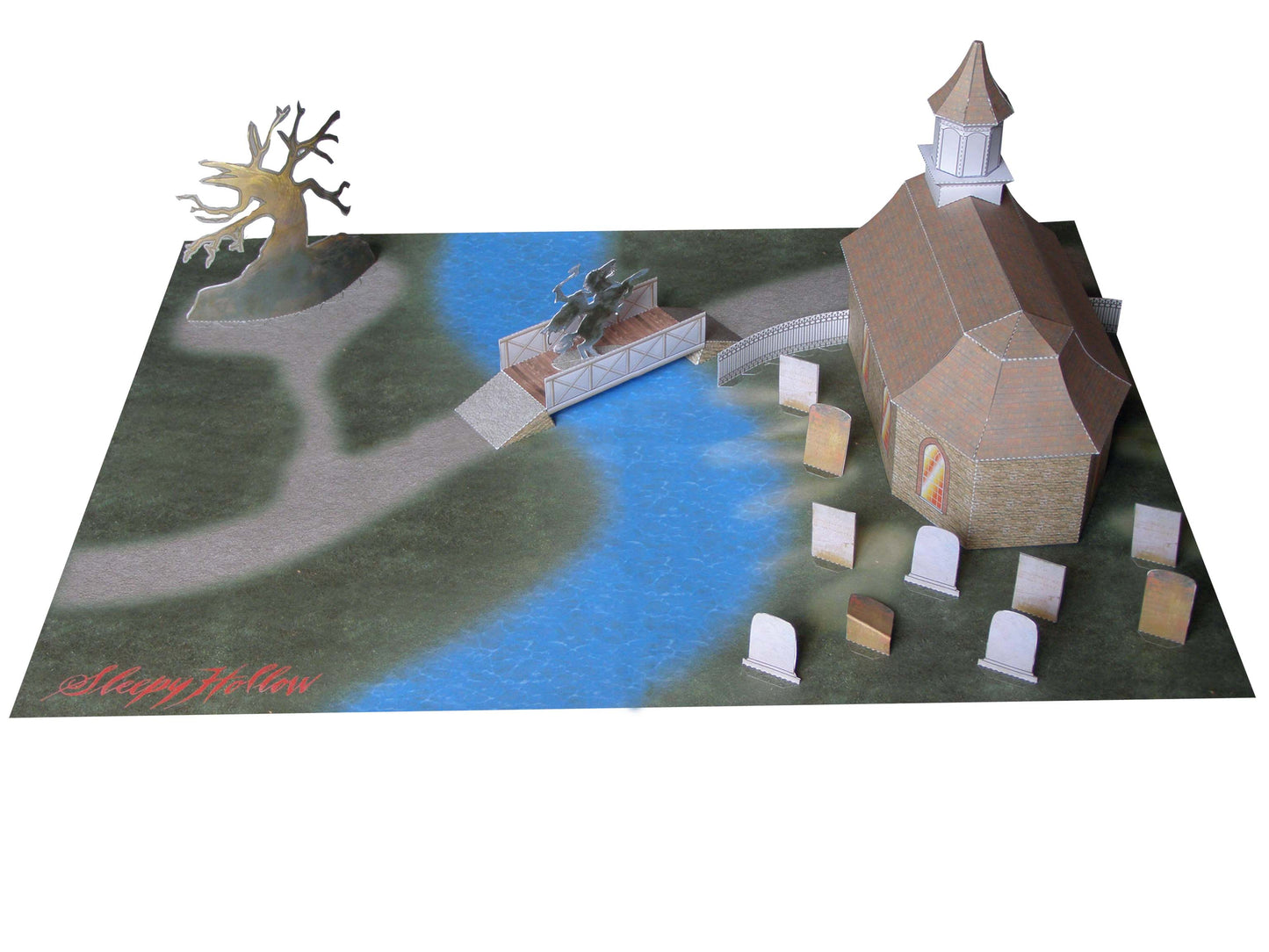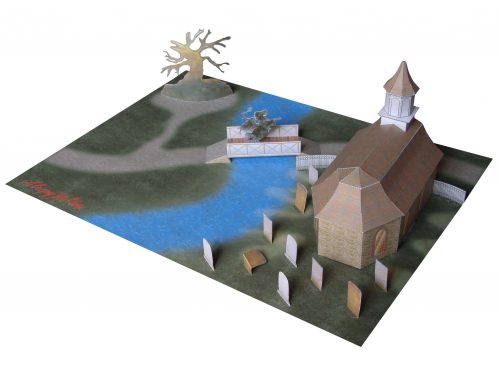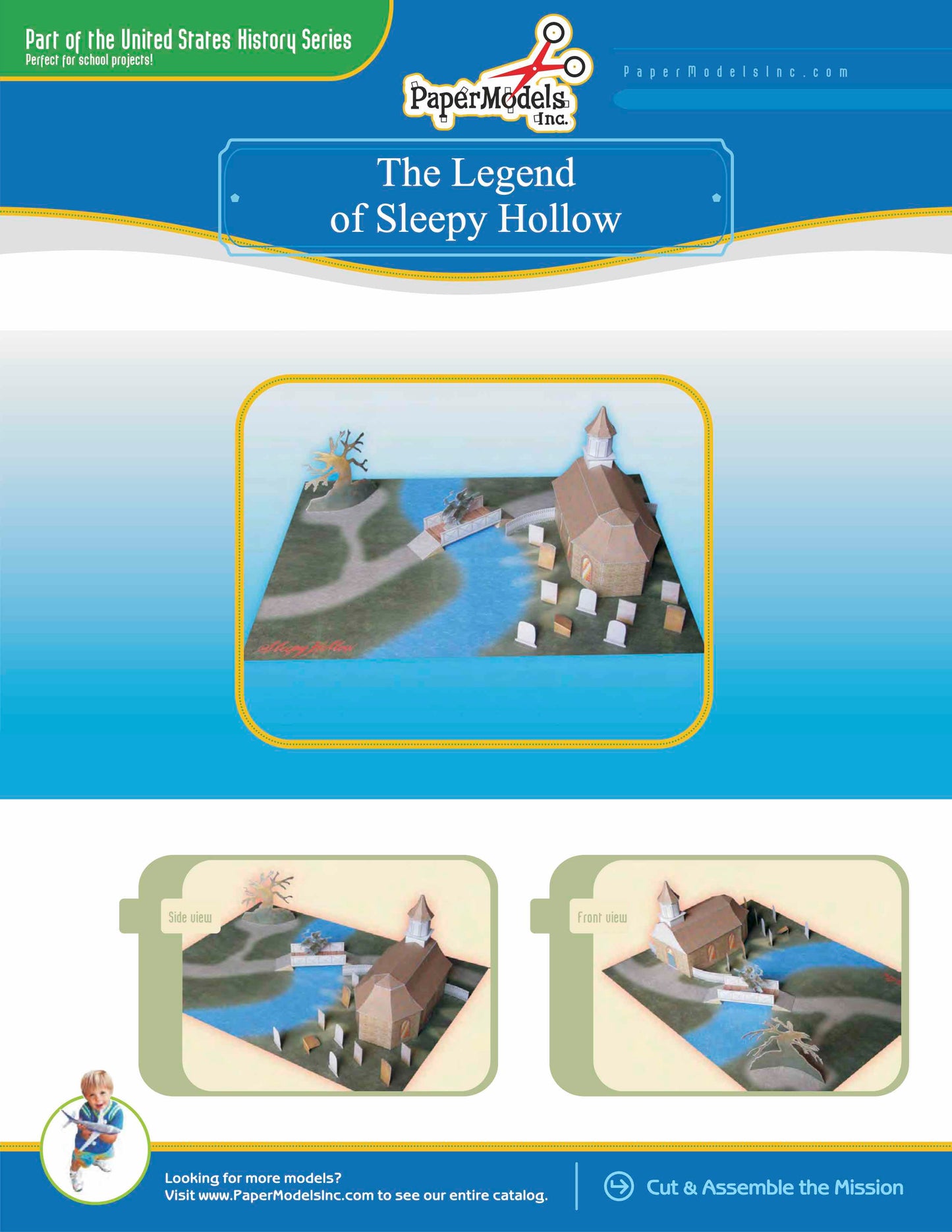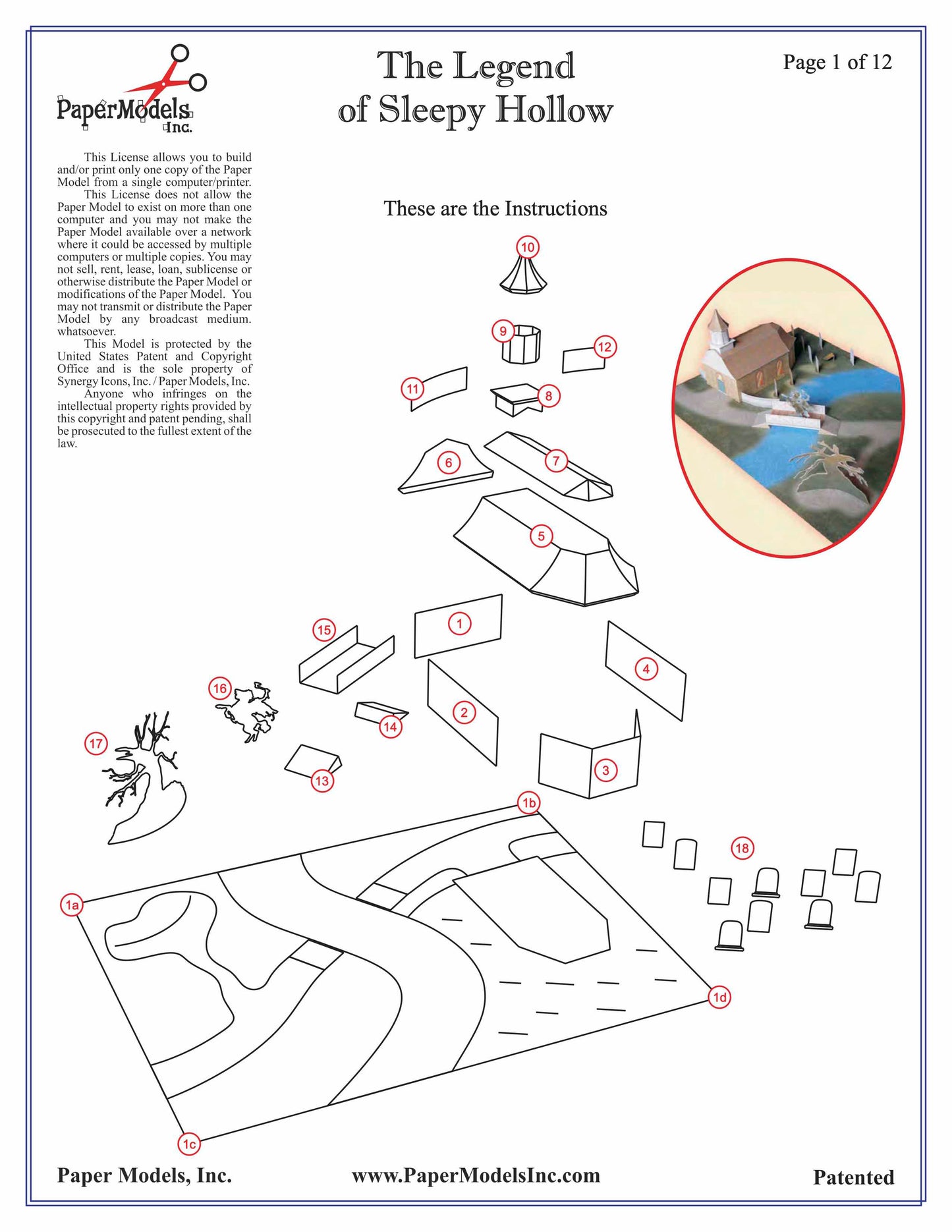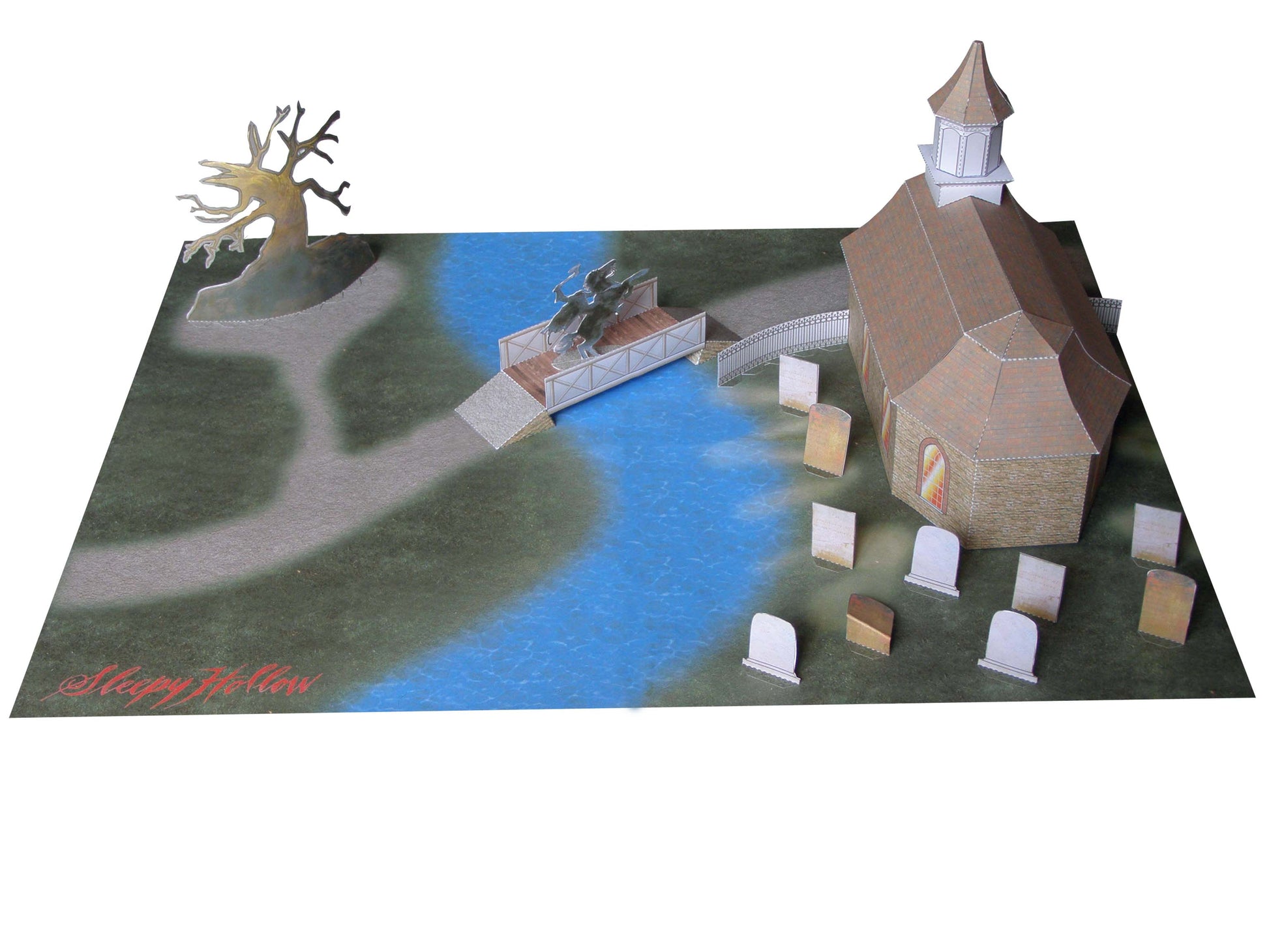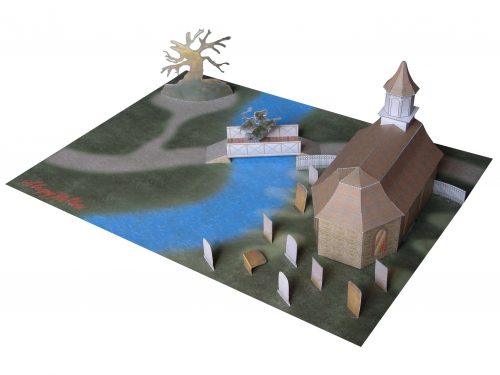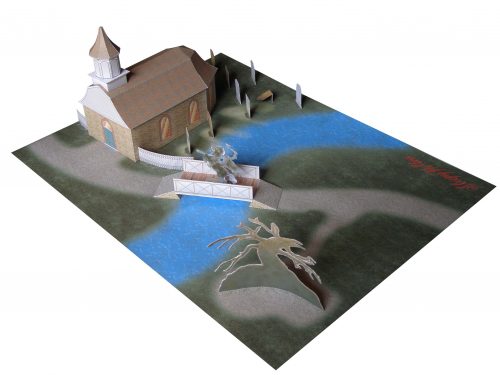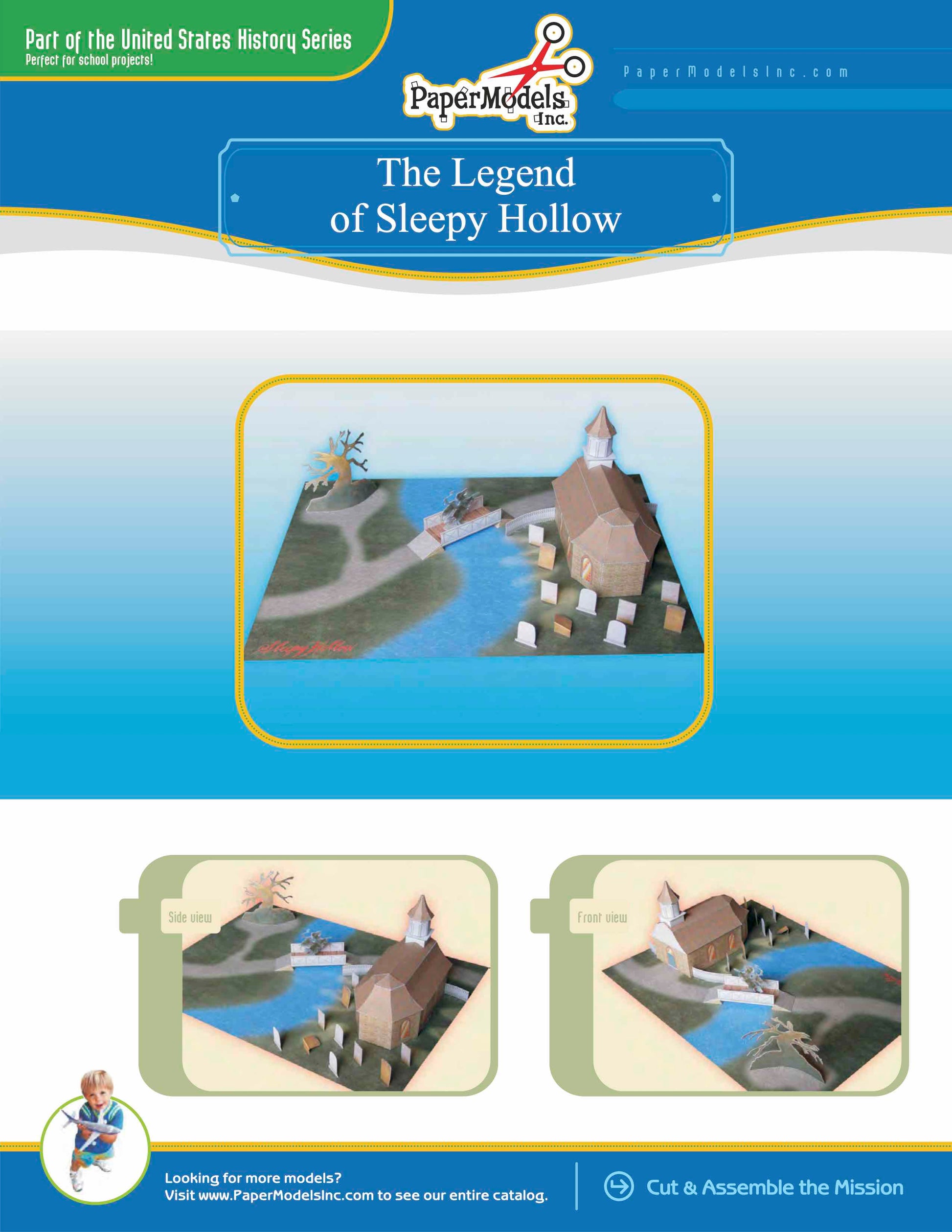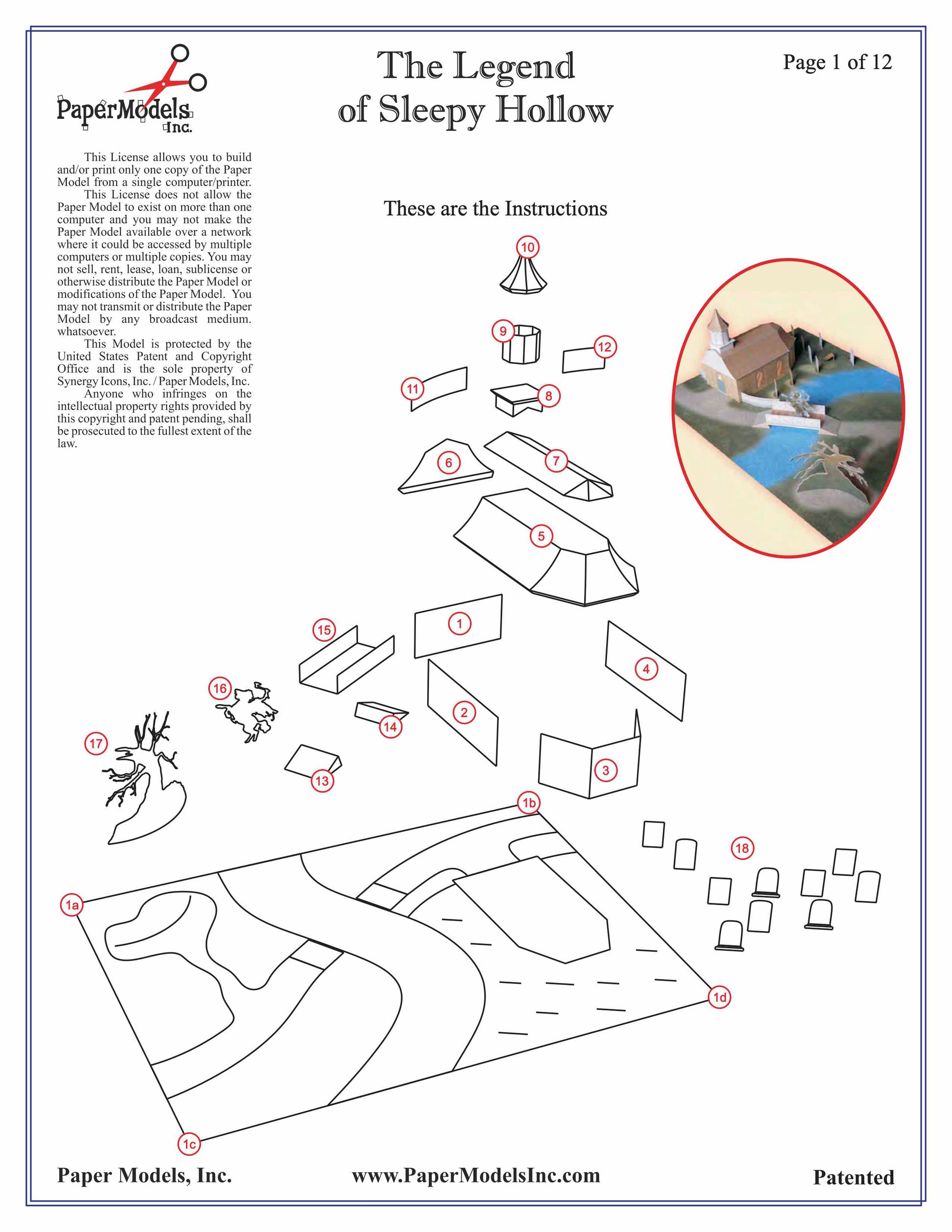Legend of Sleepy Hollow - Washington Irving - Paper Model Project Kit
Legend of Sleepy Hollow - Washington Irving - Paper Model Project Kit
Couldn't load pickup availability
🌟 Welcome to Paper Models Online – Your Shortcut to Academic Excellence! 🌟
Are you tired of stressing over last-minute school projects? Look no further! Paper Models Online is here to make your academic life a breeze.
🚀 Why Choose Us?
At Paper Models Online, we understand the pressure of looming deadlines and the desire for that coveted "A" grade. That's why we've crafted the perfect solution for you! Whether you're a student aiming for extra credit, a parent looking for quality time with your kids, or just someone in need of a break from the chaos, our paper models are your ticket to success!
💻 Instant PDF Download OR Pre-Printed & Shipped
You're in control! Choose from our instant PDF download, starting at just $9.95 for the 7"x10" size or $11.95 for the 10"x13" size.
Print it on your home or office printer using regular paper, or opt for the hassle-free pre-printed option. We'll ship it directly to your doorstep for a flat $5 fee via USPS First-Class Parcel, ensuring you get it in 1-3 days!
✂️ Easy Assembly, Maximum Impact
With just a pair of scissors, some glue, and an hour of your time, you can turn these paper sheets into stunning three-dimensional architectural replicas or complete science projects. The images on our website are real models made from our kits, and we even provide a history to help you craft an impressive report.
🎨 Unleash Your Creativity
Not into mission kits? No worries! Our models double as templates for your creative genius. Paint, trace, adjust sizes—your imagination is the only limit! Create a custom masterpiece that reflects your unique style and personality.
🛒 The Buying Process Made Simple
- Choose Your Size: 7"x10" or 10"x13"
- Choose Your Delivery: Instant PDF download or pre-printed and shipped
- Purchase Your Model: It's that easy!

📦 Typical Kit Sample
Each kit includes 8 to 18 pages, providing everything you need to bring the model to life. An "exploded view" guides you through assembly, and a complimentary history adds that extra touch for your report. Impress your teacher not just with creativity but also with your research skills!
Don't let deadlines stress you out. Choose Paper Models Online for your next school project, and let us be Your Best Way To Get An "A"! 🌟
 |
 |
 |
| Exploded View | Sample Pieces | Finished Model |
Free History For Your Report
Sleepy Hollow
“The Legend of Sleepy Hollow” is a famous short story in English literature, written by Washington Irving and first included in his short-story compilation, “A Sketchbook of Geoffrey Crayon, Gent.,” published in 1820. This story, along with “Rip Van Winkle” and also included in the same composition, is among the earliest American works that are still widely read today. This fictional piece tells the story of Ichabod Crane, and is set in the quiet settlement of Sleepy Hollow, located just outside of Tarry Town, New York, a Dutch settlement. In the story, Crane, who plays a schoolmaster who is a bit on the cowardly side, goes head-to-head against the rowdy town bully, Abraham “Brom Bones” Van Brunt, for the chance to win the heart of the young fair lady Katrina Van Tassel. The plot develops one night when Crane leaves the Van Tassel household, and is pursued relentlessly by the famed Headless Horseman, who is said to be the ghost of an American Revolutionary War hero whom lost his head in a battle. The town legend of the Headless Horseman is that he rides every night in quest for his head, and is anxious to behead others in his quest. His motivations for chasing Crane, in particular, are not clear, but he succeeds in running Crane from town. Van Brunt ends up marrying Van Tassel in Crane’s absence, but was told, “to look exceedingly knowing whenever the story of Ichabod was related.”
Irving briefly began military service in 1814 after the British attacked Washington, D.C., in The War of 1812. While Irving saw military action, especially during battles taking place along The Great Lakes, the financial repercussions of the war left his family in ruins. One year later, Irving returned to England to try to resurrect the vibrant trading company his family once had established there. During his seventeen years in England, Irving became a lawyer and served as an American diplomat for Britain and Spain, and learned Spanish, German, and Dutch, among other languages. In 1815, Irving went to explore other portions of Europe, and returned to England where he penned his famous Sleepy Hollow story. Irving promptly continued writing, penning other books in the historical- fiction genre such as “The Life and Voyages of Christopher Columbus” (1828) and “Conquest of Grenada” (1829). Also in 1829, while serving in the US Embassy in London, Irving penned, “Tales of the Alhambra,” a collection of short stories and sketches.
In 1832 Irving returned to The United States, but began focusing on the west rather than the familiar New England territory he grew up in. This exploration to the edge of the continent led to several other fictional and sometimes non-fiction controversial works, including, “A Tour on the Prairie” (1835), about which he wrote of the Europeans’ and Americans’ mishandling of Native American interests. Irving eventually returned to Tarry Town, New York, and continued writing, and became the first author to use the now- famous term “Gotham” as a literary allusion for New York City. Gotham would later be used in pop culture in the Batman comic book series. Irving passed away on November 28, 1859, but was quoted as saying as his final words before turning into bed that night, “Well, I must arrange my pillows for another weary night! If this could only end!” Fittingly, Irving was buried in the Sleepy Hollow Cemetery.
© Copyright – Paper Models, Inc. – All Rights Reserved
Share
